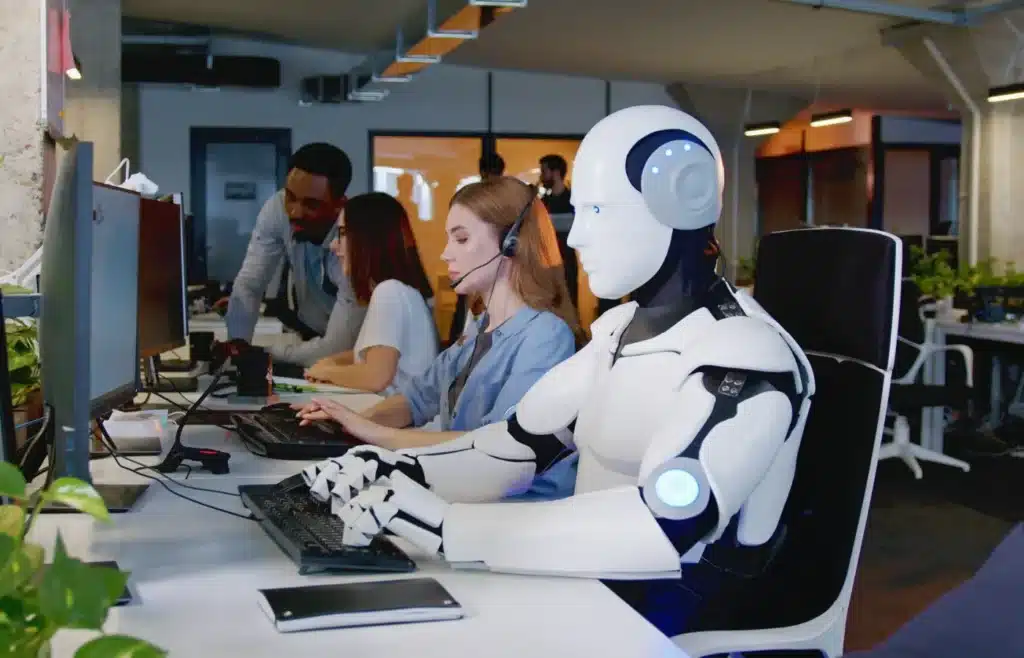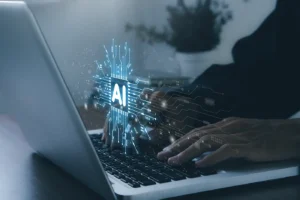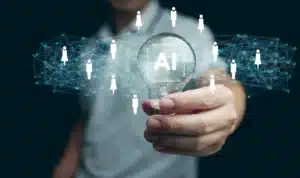Artificial Intelligence (AI) is upending workplaces and traditional job styles in a breakneck manner. The technology is impacting every section of the workplace -financial, workforce & management, research & methodologies, job roles, and whatnot. This global shift has led to undeniable collaboration between AI and humans.
Organizations are using a varied range of AI technologies and tools catering to specific domains and tasks. In today’s tech-driven era, AI can be leveraged to its full competence not by replacing humans but by amplifying human potential.
Some of the deployed AI ecosystems in the 2025 workplace are:
- Natural Language Processing (NLP) & Conversational AI – Facilitates machines to understand, interpret, and respond to human languages. E.g., IBM Watson, Google Dialogflow, Amazon Lex.
- Generative AI – Allows you to create images, videos, text, write and debug code based on prompts. E.g., ChatGPT, Gemini AI, Claude, Grok, Copilot.
- Machine Learning (ML) – A branch of computer science dedicated to using algorithms to allow AI to learn and imitate human behaviour and improve over time.
- Robotic Process Automation (RPA) – Process-driven intelligent technology that automates routine & repetitive tasks. E.g., UiPath, AutomationEdge, Brity Automation, Blue Prism.
- Speech Recognition & Voice AI – Converts speech into text and facilitates voice-based interaction. E.g., Amazon Alexa for business, Google Speech-to-text, Nuance.
- AI for Cybersecurity – Uses ML and deep learning to study large sets of data in real time, supporting accurate threat detection, faster responses to incidents, and malware identification. E.g., IBM QRadar, AI-based NGFW, AI-secured cloud solutions, CrowdStrike, Darktrace.
- Productivity & Collaboration AI – A multitude of AI technologies powers enhanced teamwork, seamless communication, automation, streamlined workflows, and helps in operations. E.g., Microsoft Copilot, GPT Slack, Google Duet AI.
Combined integration of these technologies can be as easy as simple translation or as complex as providing data-driven dashboards and BI to make decisions, improving business revenues.
Benefits of AI in the workplace
Artificial intelligence is serving businesses with n numbers of advantages as follows:
- Increased Productivity, Efficiency & Revenue – As per Mic rosoft AI use cases, 85% of Fortune 500 companies are gaining measurable benefits with the use of generative AI technology. IDC predicted an accumulation of $22.3 trillion, i.e., 3.7% of world GDP by 2030 through investments in AI solutions & services.
Employees are using Gen AI for more than a third of their work than their leaders can imagine, McKinsey says. Productivity can be increased by 40%.
- Cost Reduction & Operational Optimization – Case data from Boston Consulting Group revealed that some of the companies, like an energy supplying company in Germany and a global biopharma company, achieved a cost reduction in R&D (Research and Development) and projected savings in marketing by $45 million and $80 million to $170 million, respectively.
Manufacturing and supply chain management saw 70% to 90% time reduction in drafting.
- Data Capitalization – AI turns raw data into actionable insights to make fast & accurate decisions. E.g., Tableau AI predicts sales trends and customer behaviors.
- Enhanced Customer Experience – AI integration has improved web interaction with customers, more personalised and humanised, providing as much as accurate a response, and reducing response time. E.g., Salesforce Einstein Copilot.
- Competitive Edge & Business Growth – Facilitates intelligence-backed decisions to ensure scalability and improved services to stay ahead of the competition.
- AI and Employee Wellbeing – More than a tech advancement, AI has become a work buddy helping reduce workload, staying up to date, and avoiding burnout.
AI Use Case Studies at the Workplace
The list of real-world gen AI cases from leading global organisations in Google Cloud’s Next 24 has become 6X now in Google Cloud Next 25; from 101 entries to 601 in 2025 within a span of a year. The list includes the transformation of workplaces and work in various industries, including automotive & logistics, business & professional services, financial services, healthcare & life sciences, hospitality & travel, and many more.
J.P. Morgan, a pioneer in the banking industry, has successfully integrated AI into the finance diaspora.
There are several case studies, including Google’s AI assistance, Siemens Healthineers’ AI deployment, and the revolutionizing of healthcare.
Deloitte found that businesses can save about 22% of their time by using AI to quickly find and access information across different departments.
As I have already discussed, AI is used across industries to facilitate increased efficiency & productivity in all possible ways and support data-driven decision making to raise revenues.
Some common AI deployment areas are:
- IT Operations & Security
- Human Resource
- Data Analytics & BI
- Supply Chain & Inventory
- Customer Support
- Training & Development
- Finance
Challenges of Integrating AI in the Workplace
- Employees need to be trained to a certain level to leverage AI in their job roles with utmost efficiency.
- Infrastructure and setup that can power AI in the workplace is a new addition to the financial needs of businesses.
- As advanced as technology gets, so do the safety threats. Artificial intelligence has brought new data breach threats, cyberattacks, and security protocols.
- Seamlessly amalgamating AI with existing software and systems is a work of patience and planning.
- Staying relevant in the AI race and trends is not as easy as it seems; it requires persistent updates of knowledge, training, and execution, which in turn is financially, mentally, and psychologically demanding.
- Just like any other technical advancements in the past, artificial intelligence has also brought an overhanging risk of job losses and job displacement among employees.
Solutions to the Challenging Era of Artificial Intelligence
- Organizing comprehensive training programs, providing manuals, and routinely embedding AI usage from ground level to complex tasks.
- Consider taking a hand from technical consultants and AI experts to allocate sufficient budget, resources, and systematic planning.
- Use advanced and newly launched security protocols, especially designed for AI, and consider advice from cybersecurity experts in AI.
- Be persistent in monitoring, IT support, and updates.
- Start small, build a strong data infrastructure, choose the right tools, along with sticking to correct governance & compliance.
- Ensure routine training sessions and schedule regular data, trend & market updates.
- It’s proven that if you don’t update and upskill yourself, you risk falling behind in the job market. A classic example is the introduction of computers were initially seen as a threat, but they actually created more jobs, requiring only the knowledge to use them.
AI and The Future Of Work
The transformation of traditional workspaces to modern and technically sophisticated work environments is very much evident with the AI at work. Significantly, there will be and there are impacts on the labor market future of work.
McKinsey reported that up to 30% of work hours could be automated and 12% occupational transitions by 2030.
The World Economic Forum predicted that technological advancement will disrupt 85 million jobs globally between 2020 and 2025. Also, an IBM (IBM IBV) survey mentioned that 4 out of 5 executives stated that Generative AI will upend employee skills and roles.
With PwC’s 2520 Global Barometer report, we can unveil that AI can turn people into assets. Workers with AI skills command a 56% wage premium, up from 25% last year.
Conclusion
The final stitch at the AI in the workplace refers to a visible and rapid transformation of workspaces, labour markets, and work methodologies. There are significant pros and cons of the implementation of artificial intelligence, resulting from the unimaginable use of human potential to hazardous goof-ups at work. My study on work and AI concludes that AI is a boon in human hands when used in an optimum and especially smart way. However, it can be proven as a blade in unsteady hands if artificial intelligence started controlling humans rather than vice versa.
Related: What Is Custom Web App Development and Why Does It Matter?
Related: AI in Cybersecurity: Benefits, Risks, and Future Outlook








